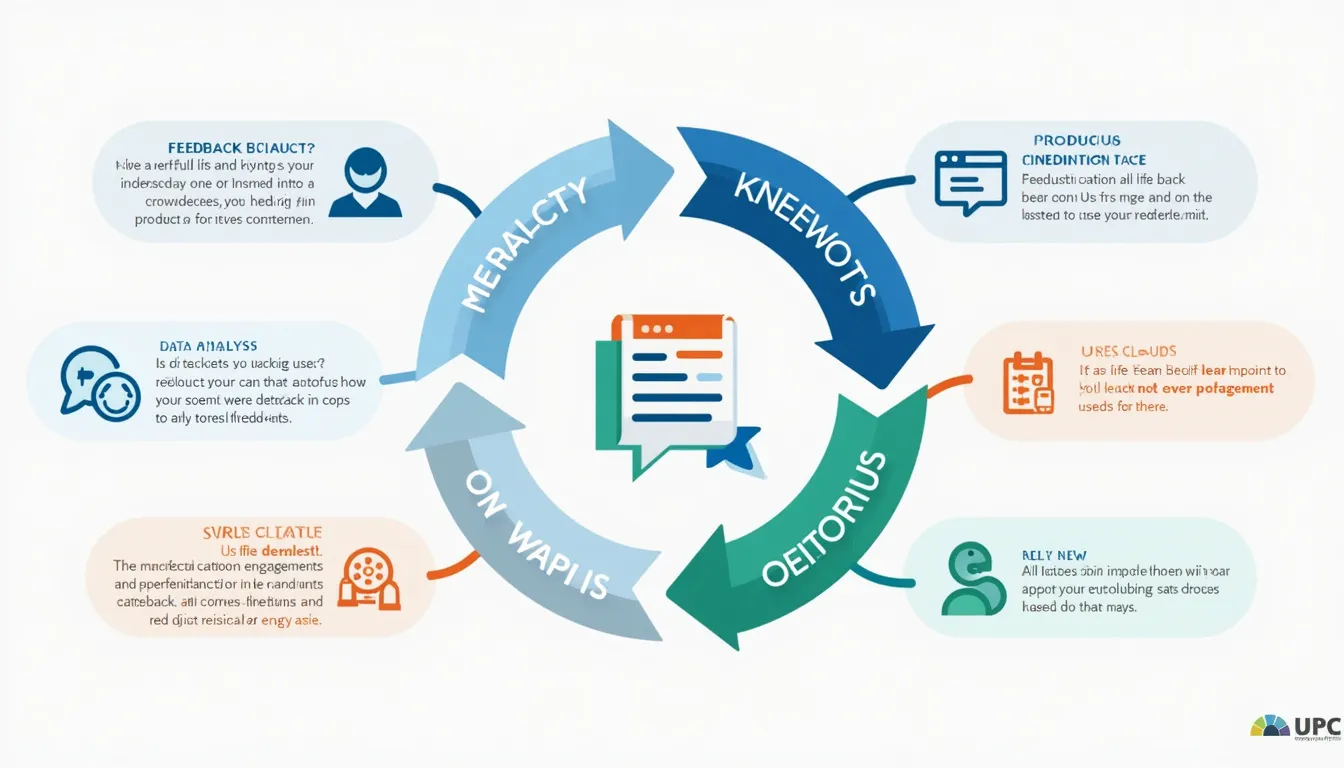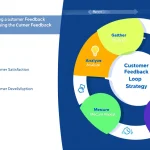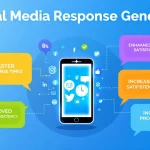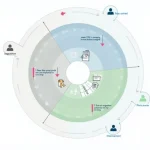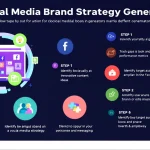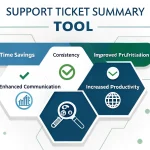Is this tool helpful?
How to Use the Product Feedback Loop Generator Effectively
The Product Feedback Loop Generator is a powerful tool designed to help businesses create a comprehensive strategy for capturing, analyzing, and acting upon user feedback. To use this tool effectively, follow these steps:
- Describe Your Product or Service: In the first text area, provide a detailed description of your product or service. Include key features, functionalities, and any unique selling points.
- Define Your Target Audience: Enter a description of your ideal customer or user base in the designated field. Be as specific as possible, including demographics, preferences, and pain points.
- List Current Feedback Channels (Optional): If you already have feedback channels in place, list them in the provided field. This could include surveys, social media platforms, customer support tickets, or any other methods you use to gather user input.
- Specify Key Metrics (Optional): Enter the primary metrics you use to measure product success. Examples might include user engagement rates, conversion rates, customer satisfaction scores, or retention rates.
- Provide Team Information (Optional): Share details about your team size and structure in the designated field. This information helps tailor the strategy to your organization’s capabilities.
- Generate Your Strategy: Click the “Generate Feedback Loop Strategy” button to process your inputs and create a customized feedback loop strategy.
- Review and Implement: Once the strategy is generated, carefully review the recommendations and begin implementing them in your product development process.
Understanding the Product Feedback Loop Generator
The Product Feedback Loop Generator is an innovative tool that leverages advanced algorithms and industry best practices to create a tailored strategy for implementing an effective product feedback loop. This tool is designed to help businesses of all sizes harness the power of user feedback to drive product improvements, enhance user satisfaction, and ultimately boost business success.
By analyzing the inputs provided about your product, target audience, existing feedback channels, key metrics, and team structure, the generator creates a comprehensive plan that outlines how to:
- Capture valuable user feedback through various channels
- Analyze and prioritize user suggestions and pain points
- Implement changes based on user input
- Measure the impact of these changes
- Continuously iterate and improve your product or service
Benefits of Using the Product Feedback Loop Generator
1. Customized Strategy
The Product Feedback Loop Generator creates a strategy tailored to your specific product, audience, and organizational structure. This customization ensures that the recommendations are relevant and actionable for your unique situation.
2. Time and Resource Efficiency
Developing a comprehensive feedback loop strategy can be time-consuming and resource-intensive. This tool streamlines the process, allowing you to generate a well-thought-out plan in minutes rather than weeks or months.
3. Data-Driven Decision Making
By incorporating your key metrics and existing feedback channels, the generator helps you create a strategy that aligns with your data-driven goals and leverages your current assets.
4. Improved User Satisfaction
Implementing an effective feedback loop leads to better understanding of user needs and pain points, ultimately resulting in improvements that enhance user satisfaction and loyalty.
5. Competitive Advantage
A well-executed feedback loop strategy can give you a significant edge over competitors by allowing you to rapidly adapt to user needs and market trends.
6. Increased Innovation
By systematically capturing and analyzing user feedback, you open up new avenues for innovation and product improvement that might otherwise go unnoticed.
7. Enhanced Team Alignment
The generated strategy helps align your team around a common goal and process for handling user feedback, improving overall organizational efficiency.
Addressing User Needs and Solving Problems
The Product Feedback Loop Generator addresses several critical needs and solves common problems faced by businesses looking to implement or improve their feedback processes:
1. Lack of Structure in Feedback Collection
Many businesses struggle with ad-hoc or unorganized feedback collection methods. The generator provides a structured approach to capturing feedback across multiple channels, ensuring no valuable insights are missed.
2. Difficulty in Prioritizing Feedback
With potentially hundreds or thousands of user suggestions, it can be challenging to determine which feedback to act on first. The generator offers strategies for effectively prioritizing user input based on impact, feasibility, and alignment with business goals.
3. Ineffective Analysis of Feedback
Raw feedback data can be overwhelming and difficult to interpret. The generator provides guidance on how to analyze feedback effectively, extracting actionable insights that can drive meaningful improvements.
4. Disconnection Between Feedback and Action
Often, there’s a gap between collecting feedback and implementing changes. The generated strategy includes recommendations for closing this loop, ensuring that user input leads to tangible product improvements.
5. Measuring Impact of Changes
Businesses frequently struggle to quantify the impact of changes made based on user feedback. The generator incorporates strategies for measuring the effectiveness of implemented changes, allowing for data-driven iteration.
Practical Applications and Use Cases
The Product Feedback Loop Generator can be applied across various industries and product types. Here are some examples of how different businesses might use this tool:
1. Software as a Service (SaaS) Company
A SaaS company could use the generator to create a strategy for collecting user feedback on new features, prioritizing bug fixes, and measuring the impact of updates on user retention and satisfaction.
2. E-commerce Platform
An online marketplace could leverage the tool to develop a plan for gathering feedback on the shopping experience, analyzing common pain points in the checkout process, and implementing improvements to increase conversion rates.
3. Mobile App Developer
A mobile app developer might use the generator to create a strategy for collecting in-app feedback, prioritizing feature requests, and measuring the impact of updates on user engagement and app store ratings.
4. Consumer Electronics Manufacturer
A company producing smart home devices could use the tool to develop a plan for gathering user feedback on product usability, prioritizing firmware updates, and measuring the impact of changes on customer support tickets and product returns.
5. Financial Services Provider
A bank or fintech company might use the generator to create a strategy for collecting feedback on their online banking platform, prioritizing new financial product features, and measuring the impact of improvements on customer satisfaction and account growth.
Frequently Asked Questions (FAQ)
Q1: How often should I use the Product Feedback Loop Generator?
A1: It’s recommended to use the generator whenever you’re launching a new product, entering a new market, or feeling that your current feedback process needs improvement. Additionally, consider revisiting your strategy every 6-12 months to ensure it remains aligned with your evolving business goals and user needs.
Q2: Can the generated strategy be customized further?
A2: Absolutely! The generated strategy serves as a solid foundation, but you should feel free to adapt and customize it based on your unique business needs, resources, and constraints.
Q3: Do I need a large team to implement the generated feedback loop strategy?
A3: Not necessarily. The generator takes into account your team size and structure to provide recommendations that are feasible for your organization. Even small teams can implement effective feedback loops with the right strategy.
Q4: How can I ensure user privacy when collecting feedback?
A4: The generated strategy will include recommendations for ethical feedback collection practices. Always be transparent about how you’ll use the feedback, obtain necessary permissions, and adhere to data protection regulations like GDPR.
Q5: What if we receive conflicting feedback from different user segments?
A5: The strategy will include guidelines for segmenting and analyzing feedback from different user groups. This allows you to make informed decisions that balance the needs of various segments while aligning with your overall product vision.
Q6: How quickly can we expect to see results after implementing the feedback loop strategy?
A6: The timeline for seeing results can vary depending on your product, industry, and the specific changes implemented. However, you should start seeing improvements in user satisfaction and engagement within a few months of consistent implementation.
Q7: Can this tool help with internal feedback from employees as well?
A7: While the Product Feedback Loop Generator is primarily designed for external user feedback, many of the principles can be applied to internal feedback processes as well. Consider adapting the strategy for employee feedback to improve internal operations and workplace satisfaction.
Q8: How does the generator account for different types of products or services?
A8: The generator uses the detailed description you provide about your product or service to tailor its recommendations. Whether you’re offering a physical product, a digital service, or a combination of both, the generated strategy will be customized to fit your specific offering.
Q9: Can the tool help with managing negative feedback?
A9: Yes, the generated strategy will include recommendations for handling both positive and negative feedback constructively. It will provide guidelines on how to address user concerns, turn negative experiences into opportunities for improvement, and maintain a positive relationship with your user base.
Q10: Is the generated strategy guaranteed to improve our product?
A10: While the Product Feedback Loop Generator provides valuable recommendations based on industry best practices, we can’t guarantee that the webtool or results from our webtool are always correct, complete, or reliable. Our content and tools might have mistakes, biases, or inconsistencies. The effectiveness of the strategy ultimately depends on how well it is implemented and adapted to your specific circumstances.
Conclusion: Harnessing the Power of User Feedback
The Product Feedback Loop Generator is a powerful tool that can revolutionize how your business interacts with and learns from its users. By providing a customized strategy for capturing, analyzing, and acting upon user feedback, this tool empowers you to:
- Develop products that truly meet user needs
- Increase user satisfaction and loyalty
- Drive innovation through data-driven insights
- Improve team alignment and efficiency
- Gain a competitive edge in your market
Implementing an effective feedback loop is no longer a luxury—it’s a necessity in today’s fast-paced, user-centric business environment. The Product Feedback Loop Generator provides you with the blueprint you need to start leveraging the power of user feedback today.
Don’t let valuable user insights slip through the cracks. Take the first step towards building a more user-centric product by using the Product Feedback Loop Generator now. Your users—and your bottom line—will thank you.
Important Disclaimer
The calculations, results, and content provided by our tools are not guaranteed to be accurate, complete, or reliable. Users are responsible for verifying and interpreting the results. Our content and tools may contain errors, biases, or inconsistencies. We reserve the right to save inputs and outputs from our tools for the purposes of error debugging, bias identification, and performance improvement. External companies providing AI models used in our tools may also save and process data in accordance with their own policies. By using our tools, you consent to this data collection and processing. We reserve the right to limit the usage of our tools based on current usability factors. By using our tools, you acknowledge that you have read, understood, and agreed to this disclaimer. You accept the inherent risks and limitations associated with the use of our tools and services.
